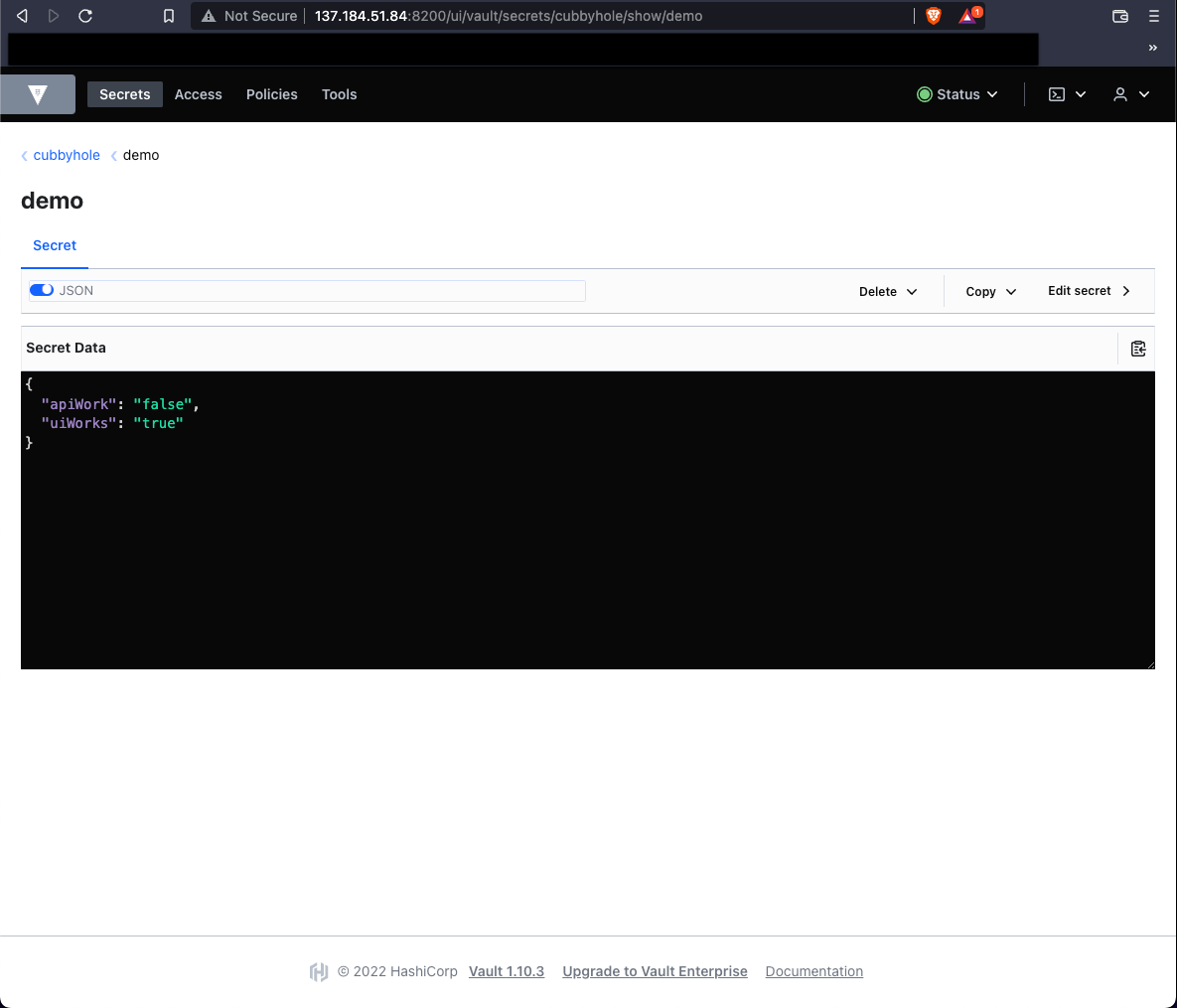Setting Up HashiCorp Vault
How to setup Hashicorp vault on a cloud instance and my reflection.
TLDR: This was a pretty simple setup and they have good documentation. I messed up by not paying attention to variables and such.
I guess you're wondering why I tried this? Vault is something that I've been hearing about a lot more when doing my devops work and I can't say I understand it. Per usual I like knowing about more about software and things that I use in my work. I was talking to my friend @estplo.it and he asked if I would stream my "setup and testing". The livestream is here, but I ended up stopping early not knowing what my problem was or how long I'd spin my wheels.
I'm going to write up how you too can run Vault from a server, connect from your local machine, talk about where I went wrong, and what I learned.

Setup Instructions
- Setup a ubuntu server that is 1GB/ 250 MB
- Update your server
- Run the commands you find here. If you can successfully run
vaultI'm going to start deviating to my instructions. - Go back to where your server is and update your firewall. For ingress you should have the following ports: 22, 80, 443, and 8200
- log back into your server and run
mkdir -p ./vault/data - create a
config.hclfile with the detail from the next section - run
vault server -config=config.hcl - close your terminal to your server (don't cmd-c the vault server)
- on your local machine install vault using the instructions here
- run
vault status - run
export VAULT_ADDR=<server-ip>:8200 - run
vault operator init - copy the details to a txt file or your password manager
- Now run
vault operator unsealand use one of the unseal keys - Run step 14 2 more times, but use different unseal keys
- run
vault statusagain and verifysealed = false - Run
vault loginand insert your token. Also runexport VAULT_TOKEN=<token> - Celebrate! your done and now shouldn't have any of my errors connecting to your vault instance.
Config.HCL
storage "raft" {
path = "./vault/data"
node_id = "node1"
}
listener "tcp" {
address = "<server-ip>:8200"
tls_disable = "true"
}
disable_mlock = true
api_addr = "http://<server-ip>:8200"
cluster_addr = "https://<server-ip>:8201"
ui = true

What I learned
So I made a lot of simple mistakes here and 99% of it was just me not reading. So here are things I think are important to highlight if you're looking to get started.
- Double check your token value
When I couldn't get things working I should have known a 403 was a Auth error. I was so into thinking I did my firewall setup wrong that I didn't really think about anything else. My API calls didn't work because I was using the wrong token.
2. Keep the UI to true
The UI really saved me. Once I was like "let me see if it works then everything really clicked for me. I literally thought "fam, your dumb, you never changed your key from the first time. So when in doubt, check the UI.
3. Write policies from the UI
Off stream I was trying to write a policy and I didn't like the command line way (because I'm me). I think it's easier to write your policies form the UI. A lot of times GUIs reduce stress and I think most sys admin folks forget about that.
4. After setup really study the setup
I do a thing where I reflect on how the setup process went, what I think of the default things, and what I think I need to do security wise to make things stronger. I think this would be good for everyone to do. Vault is a common industry secrets manager. Whether you are using this personally or on your team I think this experience reflection helps you be objective long term.
Will I keep using it?
I think for me personally, Vault is a bit much. I'm not running anything big that would require its use, but I understand it's use for teams/big orgs. I think secret management is so key for every org from a security perspective that you should also give vault a try and then let me know what you think. 😁
